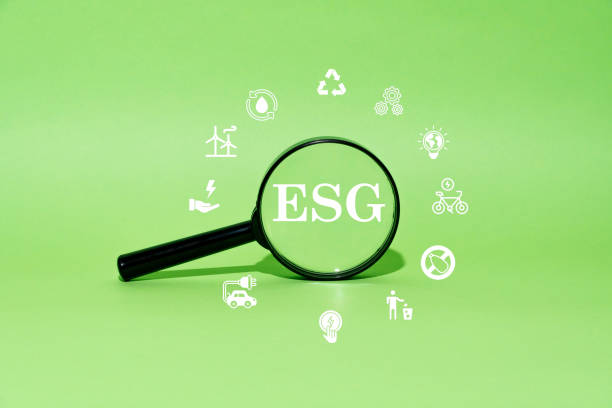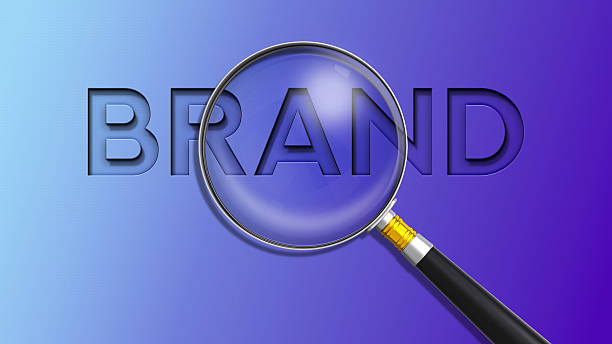What is On-Page SEO and Why is it Important?

On-Page SEO refers to the set of actions we take within a website to improve the site’s ranking in search engines like Google.
These actions include optimizing content, site structure, HTML tags, and site speed.
Unlike Off-Page SEO, which refers to activities like link building from other sites, On-Page SEO is entirely under our control and can have a significant impact on site ranking.
The importance of #on_page_seo stems from the fact that search engines use complex algorithms to provide users with the best and most relevant results.
By optimizing the internal factors of the site, we help search engines better understand our content and display it to users looking for relevant information.
A website with strong On-Page SEO not only achieves a higher ranking in search results but also provides a better user experience, which in turn can lead to increased traffic, conversion rates, and ultimately, business success.
Also, a good On-Page SEO strategy can complement Off-Page SEO efforts and double their impact.
In other words, without strong On-Page SEO, even the best external links and rankings cannot guarantee success alone.
On-Page SEO is actually the core and foundation of a website that ensures quality and relevant content is properly presented to the target audience.
Are you tired of your company’s website not being seen as it should be and losing potential customers? Solve this problem forever with professional and effective website design by Rasaweb!
✅ Increase brand credibility and build customer trust
✅ Attract targeted sales leads
⚡ Contact us now for a free consultation!
Keyword Research: The First Step in On-Page SEO

Keyword research is the first and most important step in any SEO strategy, especially On-Page SEO.
Keywords are the phrases that users use to search for information in search engines.
Choosing the right and relevant keywords helps you optimize your content to rank higher in search results for these phrases.
The keyword research process involves identifying the words that your target audience uses to find products, services, or information related to your business.
You can use various tools for this, such as Ahrefs Keywords Explorer, KeywordTool.io, Google Keyword Planner, and SEMrush.
These tools help you identify search volume, competition levels, and related keywords.
After identifying keywords, you need to prioritize them based on their relevance to your business, search volume, and competition level.
Focus on words that are most relevant to your target audience and at the same time have less competition.
These words provide better opportunities to gain a high ranking in search results.
Also, pay attention to the variety of keywords and use both Head Keywords and Long-Tail Keywords simultaneously.
Head Keywords are general and popular terms that have high search volume, but competition is also very high.
Long-Tail Keywords are more detailed and specific terms that have lower search volume, but competition is also lower, and they can attract more targeted traffic to your site.
Using keywords correctly in the page title, meta descriptions, headings and subheadings, body text, and image tags can help improve your site’s ranking in search results and improve your site’s On-Page SEO.
Content Optimization for On-Page SEO (Quality, Relevance, and Freshness)

Content optimization is one of the most important aspects of On-Page SEO.
Quality, relevant, and fresh content is not only attractive to users but also valuable to search engines.
Quality content means content that is accurate, comprehensive, useful, and reliable.
This type of content fully meets the needs of users and encourages them to interact more with your site.
To create quality content, you need to do thorough research on the topic, use reliable sources, and present the information in a simple and understandable language.
Relevant content means content that is related to your target keywords and meets the needs of your target audience.
To create relevant content, you need to use your keywords naturally and logically in the text, stick to the main topic, and avoid addressing irrelevant topics.
Fresh content means content that is regularly updated and provides new and relevant information.
Search engines like sites that constantly update their content more.
To keep content fresh, you can rewrite old articles, add new information to them, and publish them with a new update date.
In addition, you should also pay attention to the structure of the content.
Divide your content into smaller sections, use headings and subheadings, and use images, videos, and infographics to make it more attractive.
Using internal links to other pages of the site can also help improve user experience and your site’s SEO.
By optimizing content for On-Page SEO, you can improve your site’s ranking in search results, attract more traffic to your site, and increase your conversion rate.
These activities will ultimately help improve the site’s On-Page SEO.
| Element | Importance | Description |
|---|---|---|
| Page Title | Very High | Include keyword, attractive and relevant. |
| Meta Description | High | Attract users to click, include keyword. |
| Headings (H1-H6) | Medium | Content structuring, using keywords. |
| Body Text | High | Quality, relevant and up-to-date content. |
Optimizing URL Structure for On-Page SEO

URL structure is an important factor in On-Page SEO that is often overlooked.
Optimized URLs are not only easier for search engines to understand, but also more readable and attractive to users.
An optimized URL should be short, descriptive, and include relevant keywords.
Avoid using long, complex URLs that contain meaningless numbers and letters.
Instead, use short, meaningful URLs that show users and search engines what the page is about.
For example, instead of using the URL “example.com/page?id=123”, use the URL “example.com/seo-internal”.
This URL is not only shorter and more readable, but also includes the keyword “on-page SEO”, which can help improve the page’s ranking in search results.
Also, you should pay attention to the overall structure of your site’s URLs.
Use a logical and hierarchical structure that helps users and search engines easily navigate your site.
For example, you can use categories and subcategories to organize your content and create your URLs based on this structure.
In addition, you should avoid using special characters and spaces in your URLs.
Instead, use hyphens (-) to separate words.
This makes your URLs more readable and understandable.
Finally, you should make sure that all of your site’s URLs are unique and that no two pages have the same URL.
Using duplicate URLs can cause problems with your site’s On-Page SEO and lower your ranking in search results.
By optimizing your site’s URL structure, you can help improve the user experience, increase accessibility, and improve your site’s ranking in search results.
Did you know that 94% of first impressions of a company are related to its website design?
Rasaweb helps you create the best first impression by providing professional corporate website design services.
✅ Create a professional and reliable image of your brand
✅ Attract potential customers more easily and improve online presence
⚡ Get a free corporate website design consultation
Optimizing Title Tags and Meta Descriptions

Title Tags and Meta Descriptions are among the most important HTML elements that play a significant role in On-Page SEO.
These tags help search engines understand the content of the page and display it to users looking for relevant information.
The title tag is the title that appears in search results and browser tabs.
This tag should be short, attractive, and include the page’s main keyword.
The length of the title tag should not exceed 60 characters, otherwise it may be truncated in search results.
The meta description is a short summary of the page content that appears below the page title in search results.
This tag should be attractive, descriptive, and include the page’s main keyword.
The length of the meta description should not exceed 160 characters, otherwise it may be truncated in search results.
Title tags and meta descriptions are a good opportunity to attract users to click on your site’s link in search results.
Therefore, you should write them in a way that attracts users’ attention and convinces them that your page provides the best answer to their questions.
In addition, you should make sure that title tags and meta descriptions are unique and written separately for each page of your site.
Using duplicate title tags and meta descriptions can cause problems with your site’s On-Page SEO and lower your ranking in search results.
By optimizing title tags and meta descriptions, you can help improve your site’s ranking in search results, increase traffic, and improve your click-through rate.
Optimizing Images for On-Page SEO

Optimizing images is another important aspect of On-Page SEO that is often overlooked.
Quality and optimized images can help improve the user experience, increase site speed, and improve the site’s ranking in search results.
The first step in optimizing images is to choose quality and relevant images.
Avoid using low-quality, blurry, or irrelevant images.
Instead, use images that are clear, attractive, and relevant to the content of the page.
The second step is to compress the images.
Large images can slow down the site’s loading speed, which can harm the user experience and the site’s ranking in search results.
To compress images, you can use various tools such as TinyPNG, ImageOptim, and ShortPixel.
These tools significantly reduce the size of images without compromising quality.
The third step is to use Alt Text for images.
Alt Text is text that is displayed instead of the image if it fails to load.
This text should be descriptive, concise, and include a keyword related to the image.
Alt Text helps search engines understand the content of the image and display it in image search results.
In addition, you should also pay attention to the file name of the images.
Use descriptive file names that include relevant keywords.
For example, instead of using the file name “IMG_1234.jpg”, use the file name “seo-internal.jpg”.
By optimizing images for On-Page SEO, you can help improve the user experience, increase site speed, and improve your site’s ranking in search results.
Also, optimizing images can increase traffic through image search.
| Image Attribute | Description |
|---|---|
| Quality | High resolution, relevant to content |
| Size | Less than 100 KB (recommended) |
| Alt Text | Descriptive, includes keywords |
| File Name | Descriptive, includes keywords |
Optimizing Site Speed for On-Page SEO

Site speed is an important factor in On-Page SEO that directly affects user experience and the site’s ranking in search results.
Users expect web pages to load quickly, and if a site is slow, you may lose users.
Google also pays attention to site speed as a ranking factor, and sites that have higher speeds achieve a better ranking in search results.
To optimize site speed, you can use various methods.
One of the most important methods is image optimization, which was mentioned in the previous section.
In addition, you can use an optimized Content Management System (CMS), use lightweight and fast templates, and use fewer plugins.
You can also use a Content Delivery Network (CDN) to store your site’s content on different servers around the world and deliver the closest server to users.
This improves site loading speed for users around the world.
In addition, you can use Cache to store your site’s content in users’ browser memory and prevent it from being reloaded on subsequent visits.
You can also optimize your site’s HTML, CSS, and JavaScript code, remove unnecessary files, and reduce file sizes.
By optimizing site speed for On-Page SEO, you can help improve the user experience, increase conversion rates, and improve your site’s ranking in search results.
High site speed not only attracts user satisfaction but also makes search engines consider your site as a valuable resource.
Optimizing Site Responsiveness (Mobile-Friendly)

Site responsiveness (Mobile-Friendly) means that your site is displayed correctly on different devices such as mobile phones, tablets, and desktop computers.
Considering that more than half of internet traffic is through mobile devices, site responsiveness is very important for On-Page SEO.
Google also pays attention to site responsiveness as a ranking factor, and sites that are responsive achieve a better ranking in search results.
To make sure your site is responsive, you can use Google’s Mobile-Friendly Test tool (Mobile-Friendly Test).
This tool shows you how your site is displayed on mobile devices and what problems it has.
To make your site responsive, you can use a responsive template, use Responsive Design, and optimize your site’s content for mobile devices.
Responsive design means that your site automatically adapts to the screen size of the user’s device.
To do this, you can use relative measurement units such as percent (%) and em, use CSS Media Queries, and use responsive images and videos.
In addition, you should make sure that the buttons and links on your site are large enough for users to easily touch them on mobile devices, and use readable and appropriate fonts for mobile devices.
By optimizing site responsiveness for On-Page SEO, you can help improve the user experience, increase conversion rates, and improve your site’s ranking in search results.
A responsive site is not only useful for users who access your site through mobile phones, but also shows Google that you care about the user experience.
Did you know that 94% of first impressions of a company are related to its website design?
Rasaweb helps you create the best first impression by providing professional corporate website design services.
✅ Create a professional and reliable image of your brand
✅ Attract potential customers more easily and improve online presence
⚡ Get a free corporate website design consultation
Creating a Sitemap and Robots.txt File

Creating a Sitemap and Robots.txt file are two important actions in On-Page SEO that help search engines better understand your site and fully index its pages.
A sitemap is a file that contains a list of all the pages on your site.
This file helps search engines quickly and completely find your site’s pages and display them in search results.
To create a sitemap, you can use various tools such as XML-Sitemaps.com.
After creating the sitemap, you need to register it in Google Search Console.
The Robots.txt file is a file that tells search engines which pages of your site should not be indexed.
This file helps you prevent pages with duplicate content, management pages, and other pages that you do not want to be displayed in search results from being indexed.
To create a Robots.txt file, you can create a simple text file named “robots.txt” and place it in the root domain of your site.
In this file, you can specify various instructions for search engines.
For example, you can prevent a specific page or folder from being indexed using the “Disallow” directive.
By creating a sitemap and Robots.txt file, you can help search engines better understand your site and fully index its pages.
This can help improve your site’s ranking in search results.
Creating a suitable strategy for these two files is an important part of On-Page SEO that should not be ignored.
Monitoring and Measuring On-Page SEO Results

Monitoring and measuring the results of On-Page SEO is the last and most important step in this process.
Without monitoring and measuring, you cannot tell whether your efforts to improve your site’s On-Page SEO have been effective.
To monitor and measure On-Page SEO results, you can use various tools such as Google Analytics and Google Search Console.
Google Analytics provides you with information about site traffic, user behavior, conversion rates, and other important metrics.
Using this information, you can see which pages of your site have the most traffic, which pages users spend more time on, and what actions you can take to improve the user experience and increase conversion rates.
Google Search Console provides you with information about your site’s performance in Google search results.
Using this information, you can see which keywords your site ranks for in search results, how many clicks it receives, and what errors exist on your site that you need to fix.
In addition, you can use other tools such as SEMrush and Ahrefs to monitor site ranking, check backlinks, and analyze competitors.
By monitoring and measuring On-Page SEO results, you can see which strategies are effective and which strategies need to be changed.
This information helps you make better decisions about your site’s On-Page SEO and achieve better results.
Improving On-Page SEO is an ongoing process and requires constant effort and follow-up.
By monitoring and measuring results, you can continuously improve your site’s performance and achieve a better ranking in search results.
This is the most important part of optimizing a site’s On-Page SEO.
Frequently Asked Questions
| Number | Question | Answer |
|---|---|---|
| 1 | What is On-Page SEO? | On-Page SEO refers to the set of actions that are performed within a website and to optimize its pages to achieve a better ranking in search results. |
| 2 | What is the most important factor in On-Page SEO? | Quality, relevant and comprehensive content that meets the user’s needs is the most important factor in On-Page SEO. |
| 3 | What role does the Title Tag play in On-Page SEO? | The title tag is one of the most important factors that tells search engines and users what the page is about. It must include the main keyword and be attractive. |
| 4 | How important is the Meta Description tag? | Although it does not directly affect ranking, it is very effective on the click-through rate (CTR) in search results and encourages users to visit the page. |
| 5 | How is image optimization done in On-Page SEO? | By using a suitable alt tag, compressing the image size to increase loading speed, and naming the image file meaningfully. |
| 6 | What is the importance of using headings (H1, H2, H3) in On-Page SEO? | Headings help structure content, increase readability, and help search engines understand the hierarchy and subtopics of content. |
| 7 | What does internal linking mean and what are its benefits? | Internal linking means creating links between different pages of a website. This helps to distribute credibility, improve user navigation, and help search engine crawling. |
| 8 | Where should the main keyword (Focus Keyword) be placed on the page? | The main keyword should be placed in the title tag, meta description, H1, the first paragraph, and naturally and throughout the text and, if possible, in the URL address. |
| 9 | What effect does copied or duplicate content have on On-Page SEO? | Duplicate content can harm the site’s ranking and confuse search engines as to which is the original version and may detect it as spam. |
| 10 | How important is page loading speed in On-Page SEO? | Page loading speed is an important ranking factor and directly affects the user experience. Slow pages increase the bounce rate of users. |
And other services of Rasa Web advertising agency in the field of advertising
Smart reportage: A new service to increase user interaction by designing an attractive user interface.
Smart Google Ads: Professional optimization for managing campaigns using real data.
Smart Brand Identity: Professional optimization to improve SEO ranking using a SEO-oriented content strategy.
Smart Brand Identity: A professional solution for digital branding with a focus on designing an attractive user interface.
Smart Customer Journey Map: A new service to increase digital branding through intelligent data analysis.
And more than hundreds of other services in the field of internet advertising, advertising consulting and organizational solutions
Internet Advertising | Advertising Strategy | Reportage Ad
Sources
On-Page Optimization at Moz
,Semrush’s On-Page SEO Guide
,Ahrefs’ Comprehensive On-Page SEO Guide
,What is On-Page SEO? at Search Engine Land
? At Rasa Web Digital Marketing Agency, we help your business shine in today’s competitive world and achieve its goals. From multilingual website design to search engine optimization and social media management, we are with you to have a powerful presence in the online space.
📍 Tehran, Mirdamad Street, next to the Central Bank, Southern Kazeroun Alley, Ramin Alley No. 6




